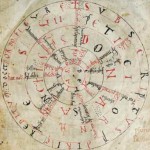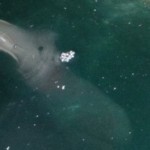Medieval Danish ‘Sea Monster’ Found in Baltic Sea
A Medieval Danish ‘Sea Monster’ was found in a shipwreck dating back to 1495, giving us a glimpse of what this ship may have looked like.
Gribshunden, Gripshunden, Griffen, or Griffone was a Danish warship, the flagship of John, King of Denmark (r. 1481–1513). Gribshunden sank in 1495 in the Blekinge archipelago after catching fire off the coast of Ronneby; she is one of the best-preserved wrecks from the early modern period.
The first known mention of the ship is in a letter, dated May 16, 1486, in which John, King of Denmark, wrote “in navi nostra Griffone“, Latin for “in our ship Griffon“. Gribshunden and its variant names were then subsequently recorded in the Danish fleet’s ship lists from 1487 to 1495.
In summer 1495, John set sail for Kalmar, Sweden, to enter into negotiations with Sten Sture the Elder, the Swedish leader who was threatening to break the Swedes away from the Kalmar Union. As the premier ship of the Danish fleet, Gribshunden was a symbol of military power intended to help deter the Swedes from independence.
However, on the way to the Swedish city of Kalmar, while anchored in the Baltic Sea at the natural harbor near the Danish port of Ronneby (subsequently annexed by Sweden), the Gribshunden caught fire. This event was contemporaneously recorded in the Sturekronikan (English: Sture Chronicle) and Reimar Koch’s chronicle of Lübeck. John himself was not aboard at the time, but, as reported by expedition member Tyge Krabbe and in an independent account by Caspar Weinreichs Danziger Chronik (Danzig Chronicle), many of the 150 crewmen who were on the ship died as it sank. With the Gribshunden lost, John was forced to cancel the expedition to Kalmar, leaving the status of the Kalmar Union in limbo for the next two years until the 1497 Battle of Rotebro, wherein the Union was reaffirmed by John’s victory and Sten’s defeat.
In the 1970s, the local diving club found the wreck at a depth of 10 m (33 ft), in the southwestern Baltic Sea north of Stora Ekön (English: “The Great Oak Island”), an island off the coast of Ronneby in southeastern Sweden. Unaware of the identity and significance of the wreck, the divers did not tell archaeologists about the discovery until 2000; the first archaeological investigations followed in 2001 and 2002. In 2013, archaeologists identified the ship as the Gribshunden through such techniques as dendrochronological sampling of the ship’s timbers, which showed that they came from oak trees felled in the winter of 1482–1483.
The wooden ship is in remarkably good condition and is among the best-preserved ships from the early modern period. That the wreckage has been left relatively free of sea worm damage has been attributed to the brackishness of the waters.




